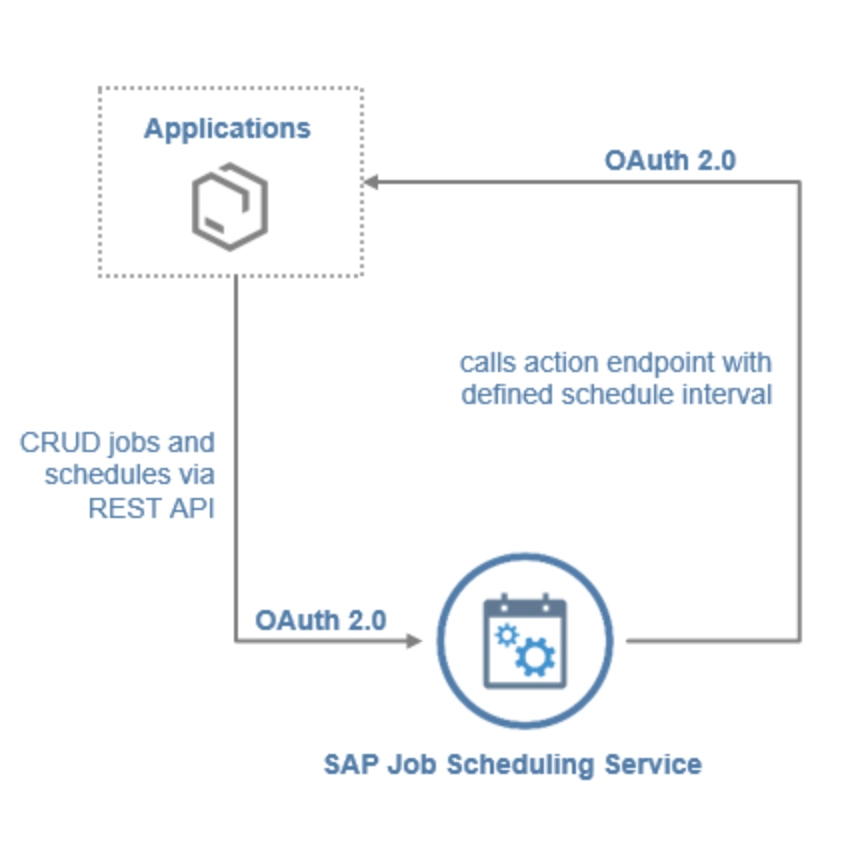Processing, storing, and retrieving vast amounts of information rapidly and efficiently is paramount for businesses. Vector databases are a critical emerging technology in addressing this demand. Unlike traditional databases, vector databases focus on high-dimensional vector data, offering unique advantages for certain use cases.
Businesses and leaders who use emerging technologies such as LLM and Generative AI, or plan to invest in a project involving such technologies, need to understand vector databases. We explain vector databases’ use cases, exploring their most prevalent applications and why it’s becoming indispensable for many industries.
1. Image and Video Recognition
Given the high-dimensional nature of images and videos, vector databases are naturally suited for tasks like similarity search within visual data. For instance, companies with vast image databases can use vector databases to find similar images, facilitating tasks like duplicate detection or image categorization.
Real-life example
Consider a platform like Pinterest. Users often pin images without detailed descriptions. A vector database can represent each image as a high-dimensional vector. When a user pins an image of a coastal sunset, the system can search through its vector database to suggest similar images, perhaps other beach landscapes or sunsets, enhancing content discovery and user engagement.
2. Natural Language Processing (NLP)
In Natural Language Processing (NLP), words or sentences can be represented as vectors through embeddings. With vector databases, finding semantically similar texts or categorizing large volumes of textual data based on similarity becomes feasible, becoming apparent in the Semantic Analysis step (Figure 1).

Figure 1: How Does NLP Work? 1
Real-life example
For example in a customer support chatbot system, customer queries are transformed into vectors using embeddings. When a user asks, “How do I reset my password?” the vector database can identify semantically similar queries like “Steps for password change” to provide a relevant response even if the exact phrasing isn’t in the system.
3. Retrieval-Augmented Generation (RAG)
RAG combines the strengths of information retrieval systems with generative AI models, enabling dynamic generation of answers or content based on external data sources. Vector databases are integral to RAG, as they enable efficient retrieval of contextually relevant information by storing document embeddings and quickly finding the most semantically similar documents during queries.
Real-life example
Consider a customer support system enhanced with RAG. When a user asks a question like, “How does the refund policy work?” the system converts the query into a vector and searches a vector database containing policy documents. The retrieved documents are then used to generate a precise, contextually accurate response.
This approach is also widely used in advanced AI-powered search systems like ChatGPT with plugins or Bing AI, where the generative model dynamically incorporates retrieved knowledge for real-time answers.
4. Recommendation Systems
Whether for movies, music, or e-commerce products, recommendation systems often rely on understanding the similarity between user preferences and item features. Vector databases can accelerate this process, making real-time, personalized recommendations a reality.
Real-life example(s)
For example, on Netflix, movies and TV shows are represented as vectors based on their genres, actors, and user reviews. When a user watches a psychological thriller starring a particular actor, the vector database can suggest other movies in the same genre or films with the same actor, offering a tailored viewing experience.
The ‘Top Picks for X’ section we encounter in most streaming platforms are concrete examples. For example, the author of this article watches political TV shows often, and Netflix advises him to watch House Of Cards. See Figure 2.

Figure 2: ‘Top Picks’ Feature on Netflix
On a music streaming platform like Spotify, each song can be represented as a vector based on features such as genre, rhythm, melody, and instrumentals. When a user listens to a jazz song with a particular tempo and mood, the platform can use the vector database to suggest other tracks with a similar vibe, enhancing the user experience.
Figure 3: Spotify Discover Weekly
5. Biometrics and Anomaly Detection
From face recognition systems to fingerprint databases, biometric data is high-dimensional and requires efficient similarity search capabilities. Similarly, anomaly detection in systems like network security can benefit from vector databases, where “normal” patterns are vectors, and deviations or anomalies can be quickly identified.
Real-life example
For example, at an international airport, a facial recognition system is used for security concerns. Each passenger’s face is captured and converted into a vector. When a passenger approaches the security check, their face is matched against a vector database of known criminals or persons of interest, ensuring rapid threat detection.
Check our list for biometric authentication software.
6. Drug Discovery and Genomics
In the medical and pharmaceutical fields, molecules and genes can be represented as high-dimensional vectors. Searching for similar compounds or genetic patterns is much more efficient when utilizing a vector database.
Real-life example
For example, chemical compounds are represented as high-dimensional vectors in a pharmaceutical research lab. When researchers identify a compound promising in treating a specific disease, the vector database can find other compounds with similar structures or properties, potentially leading to more efficient drug discovery processes.
Discover other AI applications in the healthcare.
7. Financial Services
High-dimensional data can arise from portfolios, trading patterns, or risk profiles in finance. Vector databases enable rapid similarity searches, which is beneficial for fraud detection or portfolio management tasks.
Real-life example
For example, user transaction patterns are represented as vectors in a digital banking platform. If a user typically makes small, local purchases and suddenly there’s a large international transaction, the system’s vector database can quickly identify this as an anomalous pattern, flagging it for potential fraud investigation.
8. E-commerce Personalization
Imagine an e-commerce platform that sells clothing. A high-dimensional vector can represent each product based on various attributes like color, style, fabric, and customer reviews. When a user browses a product, the system can quickly search the vector database to find items with similar attributes, offering personalized product suggestions.
Over time, this leads to a tailored shopping experience, potentially boosting sales and customer satisfaction. 90% of customers emphasize spending more with companies that personalize their customer service for them.
Check our list for e-commerce personalization software.
9. Healthcare: Patient Similarity Analysis
Vector databases are used extensively in the healthcare industry; one of the wide uses is patient similarity analysis. According to analysis, the total revenue opportunity for the healthcare AI market will exceed $34 billion by 2025.
In a hospital setting, patient records, including symptoms, medical history, and genetics, can be transformed into vectors. If a doctor is treating a patient with a rare set of symptoms, the vector database can identify past patients with similar profiles, enabling the doctor to consider previously effective treatments or identify potential risk factors.
10. Geospatial Data Analysis and Mapping
Vector databases are well-suited for analyzing geospatial data, where locations, routes, or regions can be represented as high-dimensional vectors. These vectors can include coordinates, terrain features, and contextual attributes, making them invaluable for spatial similarity searches and predictive modeling in areas like urban planning, logistics, and navigation.
Real-life example
In logistics, a delivery company like FedEx or UPS can use vector databases to optimize route planning. Delivery points are converted into vectors based on location, traffic patterns, and delivery priorities. The system can find the most efficient routes by comparing these vectors, minimizing costs and delivery times.
Similarly, for urban planning, a city government could analyze urban regions represented as vectors, combining attributes like population density, building types, and land usage to identify areas suitable for development or requiring infrastructure upgrades.
What is a Vector Database?
A vector database is a specialized type of database designed to store, index, and search high-dimensional vectors, typically the kind used in machine learning and AI applications like natural language processing, image recognition, and recommendation systems.
What is a “Vector” in This Context?
A vector is a numerical representation of an object like a word, sentence, image, or video. It’s often generated by a machine learning model and captures the semantic meaning of that object.
For example:
- The word “king” might be represented as
[0.21, -1.03, 0.98, ...] - A product image might be turned into a 512-dimensional vector
- A user profile might be embedded into a vector to feed into a recommendation engine
These vectors enable machine learning models to perform similarity-based reasoning, which is critical for many AI tasks. There are many open-source vector databases.
Vector Database Use Cases FAQ
FAQ
Reference Links
Cem's work has been cited by leading global publications including Business Insider, Forbes, Washington Post, global firms like Deloitte, HPE and NGOs like World Economic Forum and supranational organizations like European Commission. You can see more reputable companies and resources that referenced AIMultiple.
Throughout his career, Cem served as a tech consultant, tech buyer and tech entrepreneur. He advised enterprises on their technology decisions at McKinsey & Company and Altman Solon for more than a decade. He also published a McKinsey report on digitalization.
He led technology strategy and procurement of a telco while reporting to the CEO. He has also led commercial growth of deep tech company Hypatos that reached a 7 digit annual recurring revenue and a 9 digit valuation from 0 within 2 years. Cem's work in Hypatos was covered by leading technology publications like TechCrunch and Business Insider.
Cem regularly speaks at international technology conferences. He graduated from Bogazici University as a computer engineer and holds an MBA from Columbia Business School.

Be the first to comment
Your email address will not be published. All fields are required.